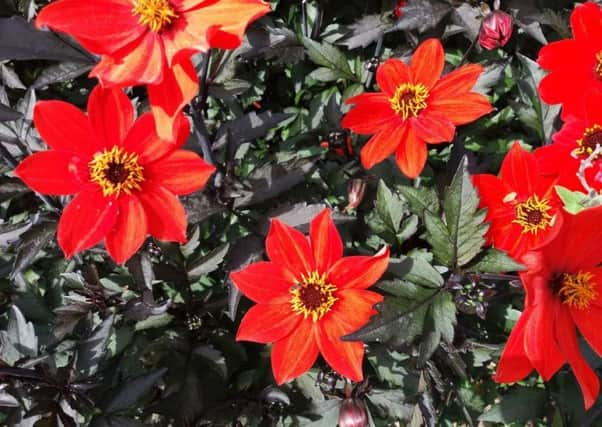Autumn's on its way, but flowering goes on


The hardy fuchsias planted in this garden refuse to stop blooming until frost intervenes. Genii has pale yellow foliage against blooms with cerise tubes and sepals, violet corollas, and in keeping with others, is easily raised from stem cuttings.
Dahlias revel in autumnal conditions, continuing to offer fresh buds. The bishop series, with its striking foliage and single blooms, is dotted throughout our borders, and when the great autumn tidy-up arrives, rather than dig and store the tubers, we mark their position in the ground.
Advertisement
Hide AdAdvertisement
Hide AdThis obviates the need to find space for lifted tubers and monitor their progress. However, if I’d purchased an expensive variety, the urge would be to protect the tuber until the stock increased. That entails digging up, boxing in compost and rooting stem cuttings that emerge in late-winter/spring according to the degree of warmth.
Late chrysanthemums come into their own as autumn approaches, the shorter days stimulating flower bud formation. The best display locally can be seen at Heighley Gate Garden Centre in September when Morpeth Chrysanthemum Society stages its annual show.
The spray-types that bloom in summer are useful as cut flowers, and we always anticipate them having more to offer when autumn closes in. Space in the greenhouse border is earmarked for them once the tomato crop has gone. Plants bristling with buds are lifted with a root-ball and transferred to the border, under glass, where they deliver more.
Herbaceous perennials, rudbeckia, Japanese anemone, helianthemum and helenium, currently performing well, will continue blooming until sedum and Michaelmas daisies join them, alongside groups of bulbs, notably autumn crocus and cyclamen.
Advertisement
Hide AdAdvertisement
Hide AdLocal moorland is alive with purple heather in late August, while cultivated varieties of the same common ling, Calluna vulgaris, start to bloom in our gardens.
They’re quite happy in a soil with neutral pH, and eye-catching, with upright, double pink flowering spikes. Once a group of three or so is established, you can pick the stems for petite bowl arrangements.
But this is only the beginning of our heather-fest. Erica carneas that will carry the baton from November to next spring, and supply early bee visitors, are gearing up to bloom.
Resolve to enjoy summer while it lasts, and next time a large colour gap appears in a border, be prepared. Take a leaf out of the Alnwick Garden’s book and have potted reinforcements standing by.
When its collection of tall delphiniums begins to fade, they’re pruned to ground level and replaced by a spectacular display of agapanthus.